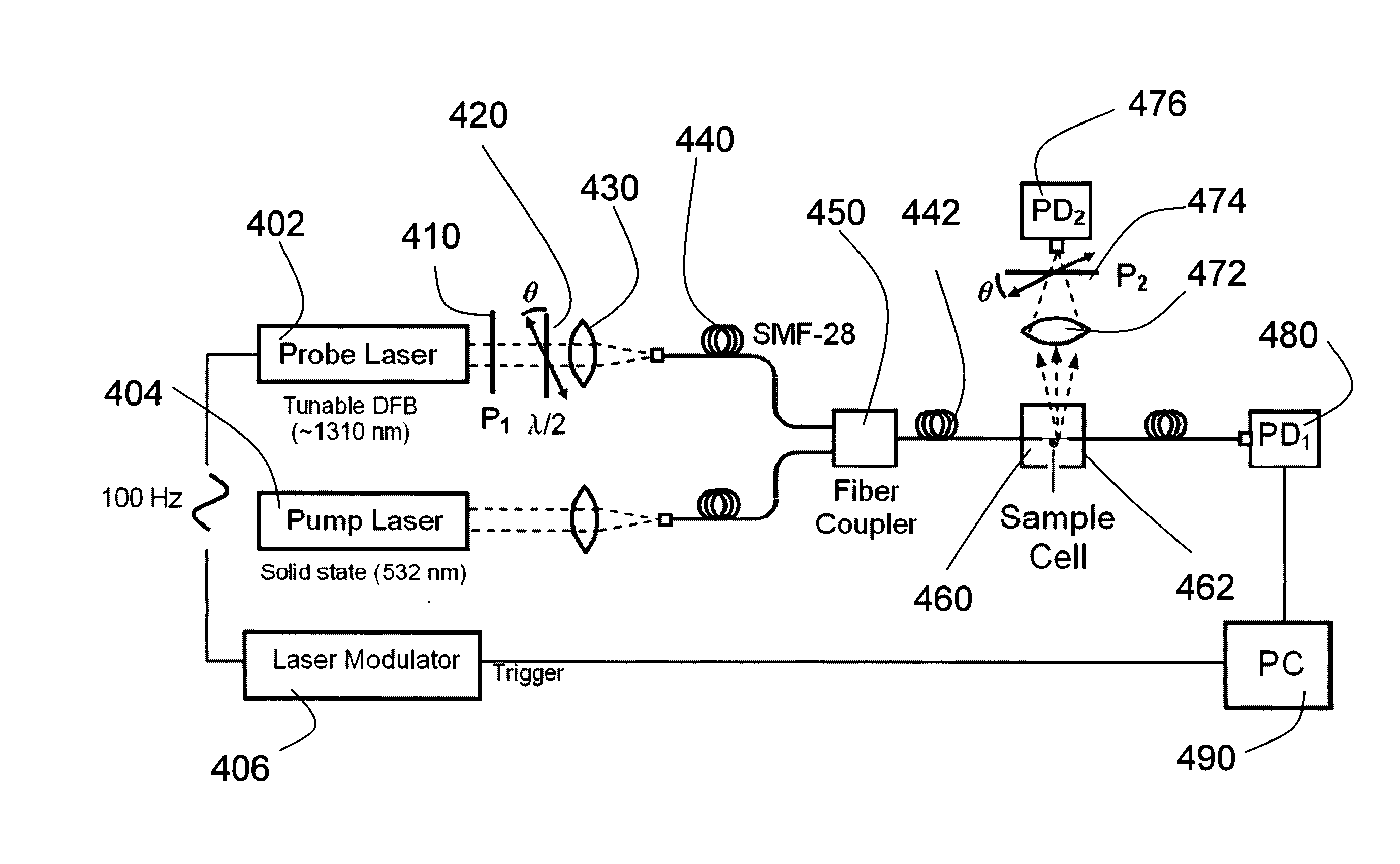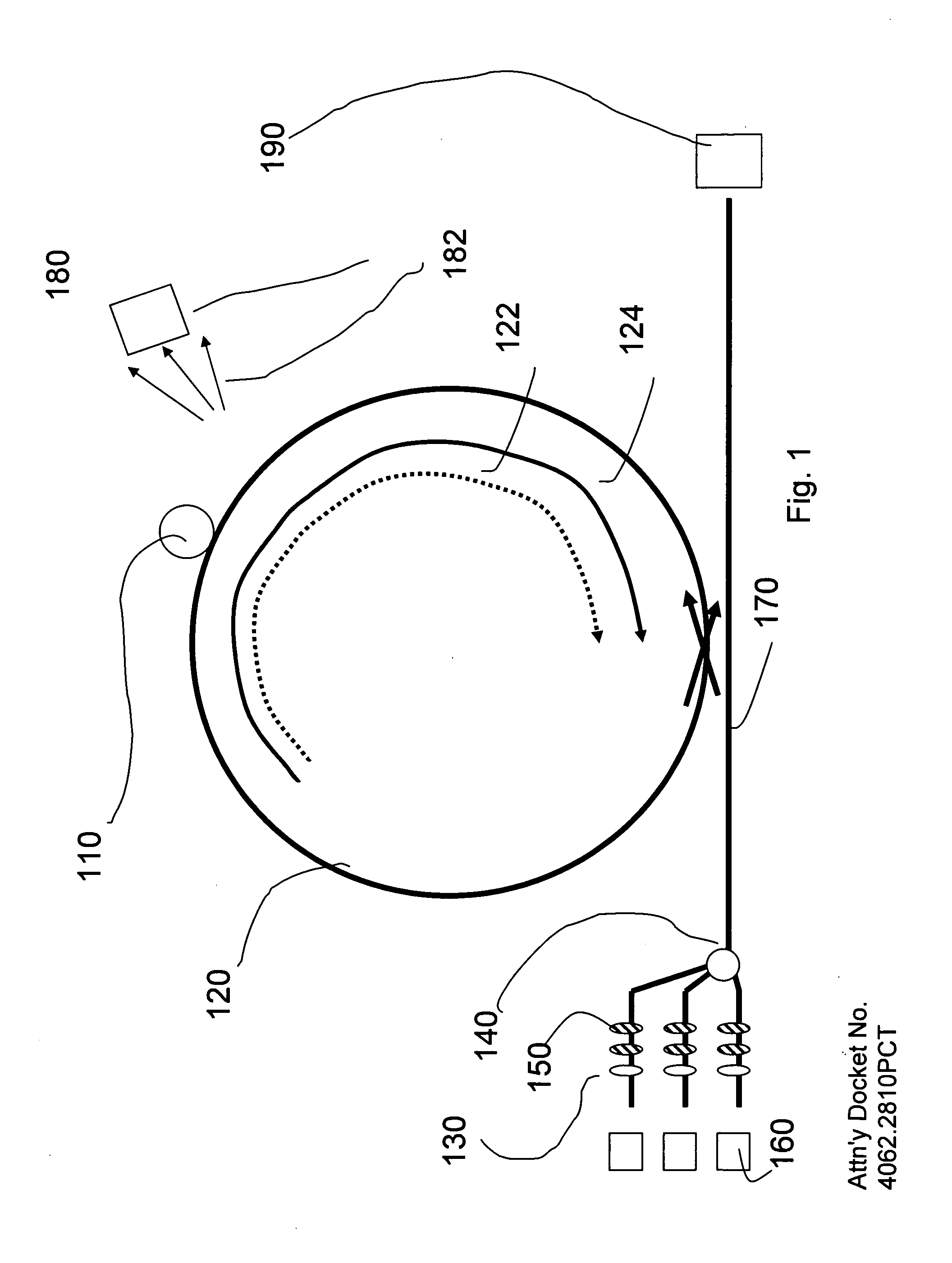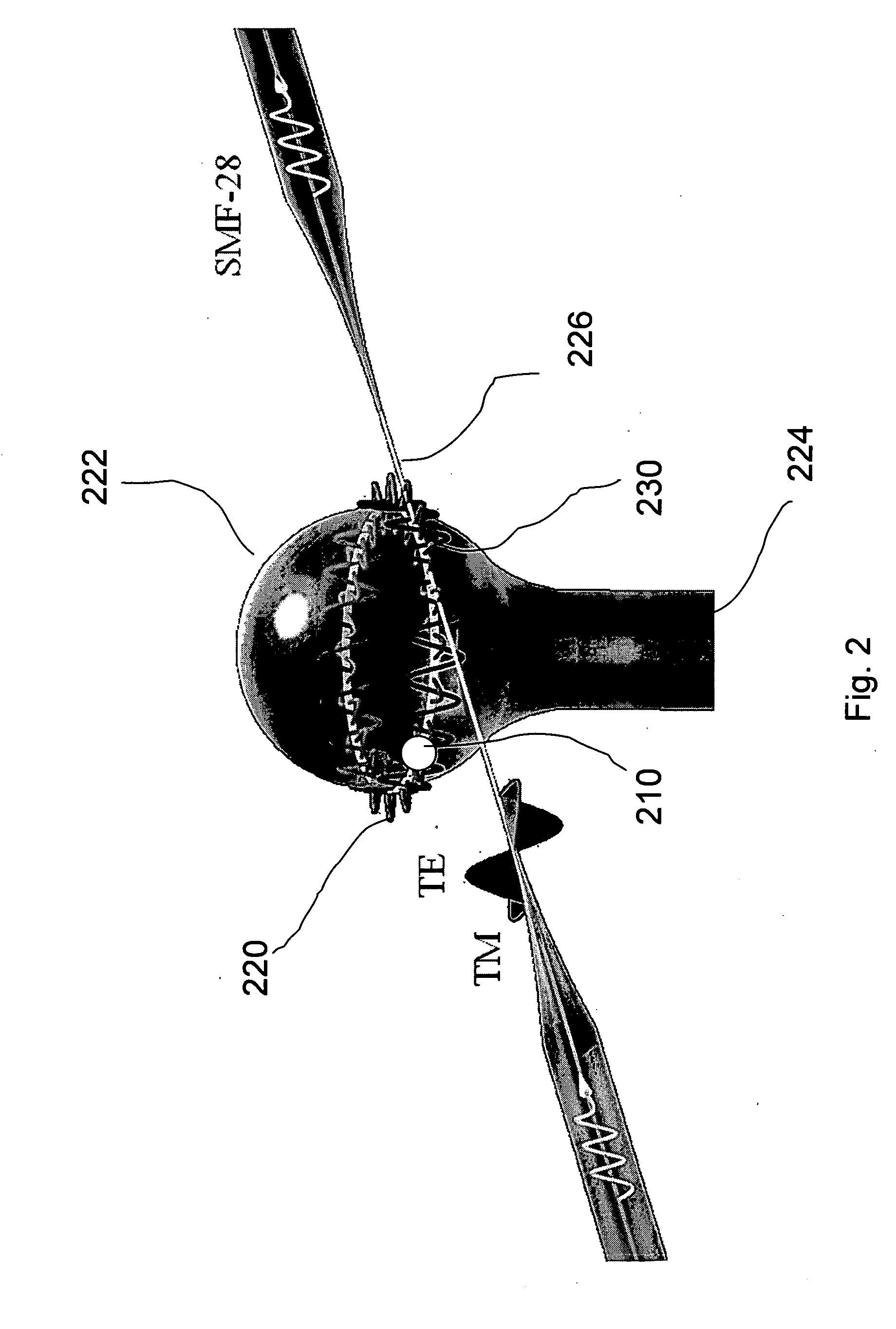Methods and devices for measurements using pump-probe spectroscopy in high-q microcavities
a technology of microcavities and spectroscopy, which is applied in the direction of optical radiation measurement, interferometric spectrometry, instruments, etc., to achieve the effect of expanding sensing capabilities
- Summary
- Abstract
- Description
- Claims
- Application Information
AI Technical Summary
Benefits of technology
Problems solved by technology
Method used
Image
Examples
Embodiment Construction
[0025]In a preferred embodiment of the present invention, optical microcavities are used as a sensitive spectroscopic tool for detecting molecules and probing conformations and orientations of molecular assemblies. An exemplary setup and exemplary methods are described for measurements of photoinduced conformational changes in bacteriorhodopsin membrane.
[0026]An exemplary optical setup is described with reference to FIG. 4. A sample cell 460 was constructed by threading a single mode optical fiber (SMF-28) 442 through a 1 cm polystyrene cuvette 462. The fiber with a stripped polymer sheath was glued to the sides of the container and the exposed silica was etched with a 50% hydrofluoric (HF) acid. After a 30-minute etch a taper with a diameter of ˜2-3 μm was formed, as observed with an upright microscope (not shown) equipped with a long working distance objective. The taper was used to excite WGMs in optical resonators by evanescent field coupling. A silica microsphere (˜300 μm diame...
PUM
 Login to View More
Login to View More Abstract
Description
Claims
Application Information
 Login to View More
Login to View More - R&D
- Intellectual Property
- Life Sciences
- Materials
- Tech Scout
- Unparalleled Data Quality
- Higher Quality Content
- 60% Fewer Hallucinations
Browse by: Latest US Patents, China's latest patents, Technical Efficacy Thesaurus, Application Domain, Technology Topic, Popular Technical Reports.
© 2025 PatSnap. All rights reserved.Legal|Privacy policy|Modern Slavery Act Transparency Statement|Sitemap|About US| Contact US: help@patsnap.com



